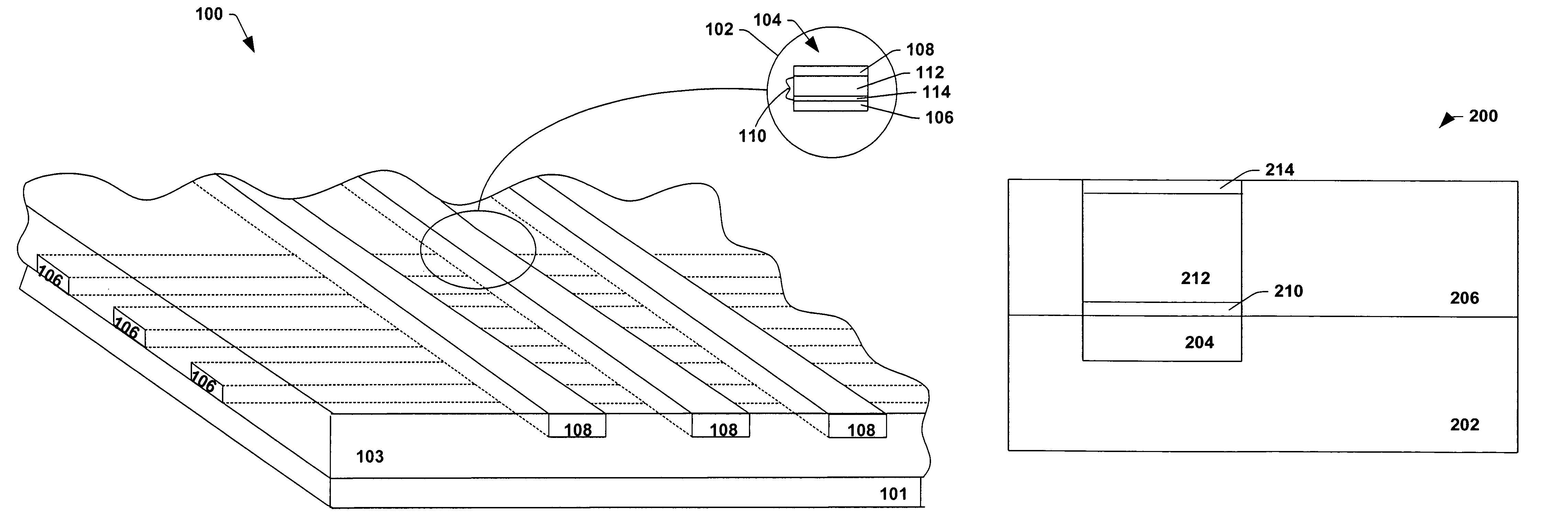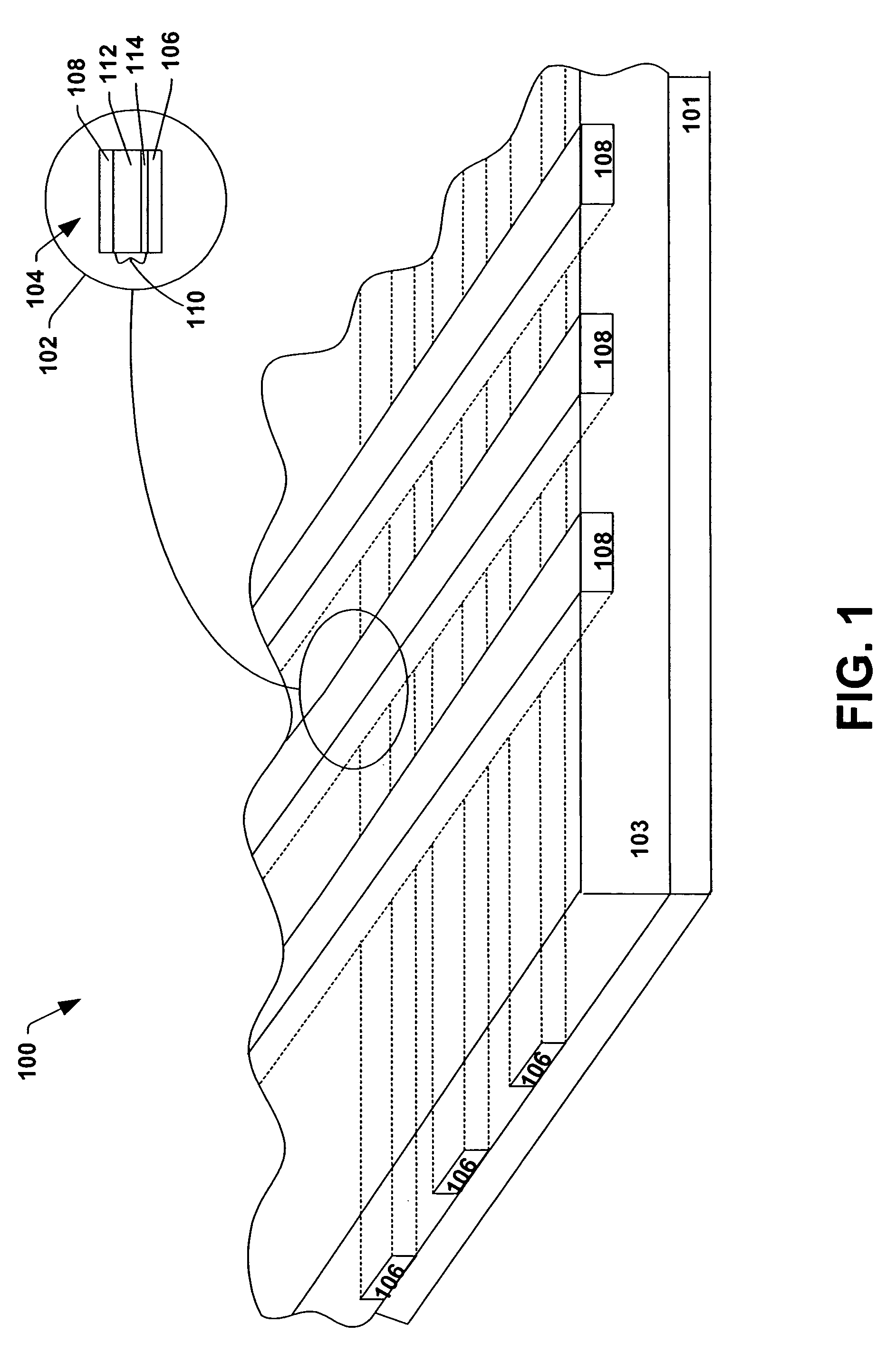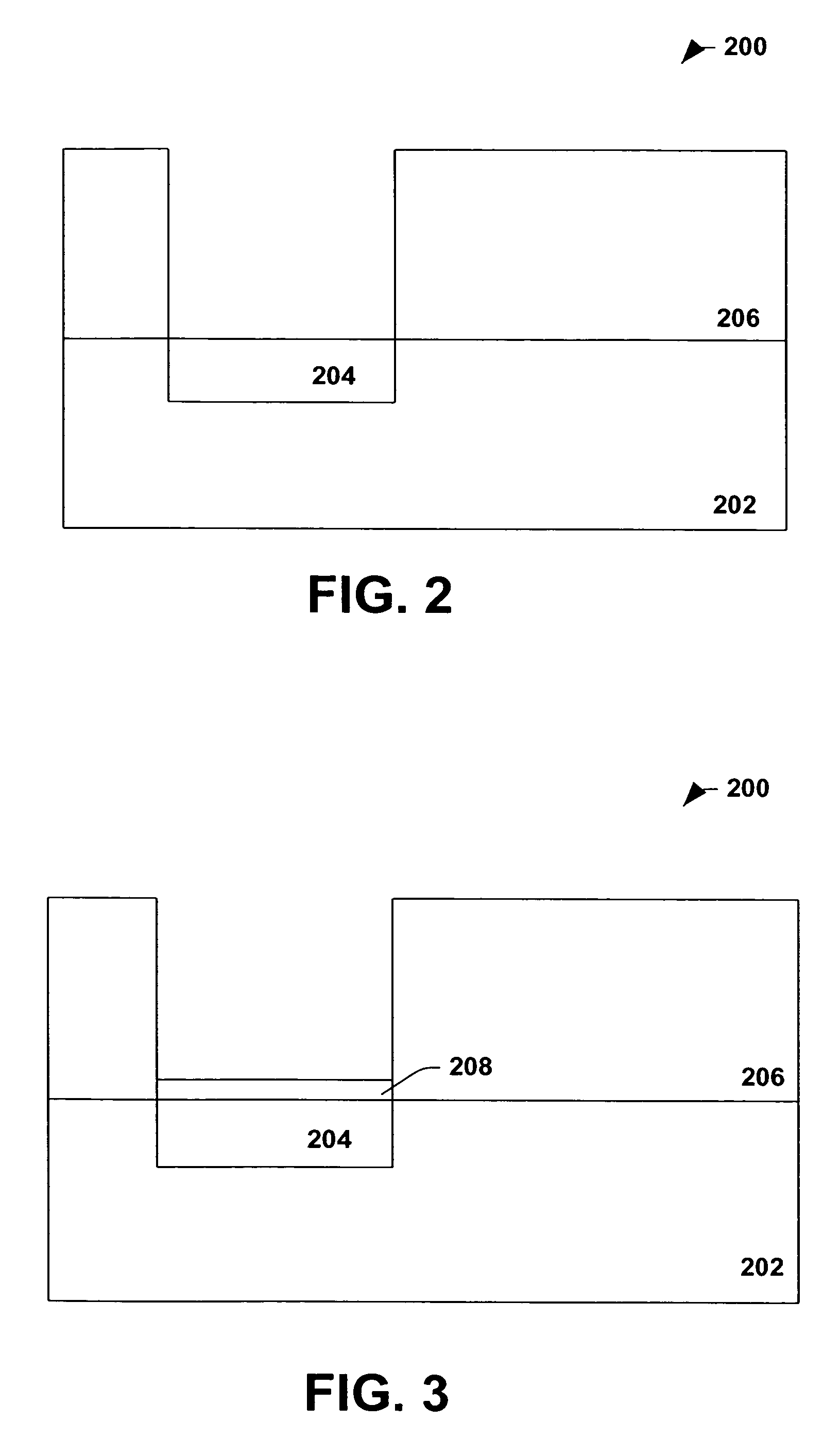SO2 treatment of oxidized CuO for copper sulfide formation of memory element growth
- Summary
- Abstract
- Description
- Claims
- Application Information
AI Technical Summary
Benefits of technology
Problems solved by technology
Method used
Image
Examples
Example
[0018]The present invention involves using a sulfur treatment to form CuS layers or regions in organic memory cells made of two electrodes with a controllably conductive media between the two electrodes. The controllably conductive media contains an organic semiconductor layer and the CuS layer, the latter formed by the sulfur treatment of an oxidized surface. Specifically, copper in an electrode is oxidized to form copper oxide, than the copper oxide is efficiently converted to copper sulfide. The organic memory cells may optionally contain additional layers, such as additional electrodes, charge retention layers, and / or chemically active layers.
[0019]The impedance of the controllably conductive media changes when an external stimulus such as an applied electric field is imposed. A plurality of organic memory cells, which may be referred to as an array, form an organic memory device. In this connection, organic memory cells may form an organic memory device and function in a manner...
PUM
 Login to View More
Login to View More Abstract
Description
Claims
Application Information
 Login to View More
Login to View More - R&D
- Intellectual Property
- Life Sciences
- Materials
- Tech Scout
- Unparalleled Data Quality
- Higher Quality Content
- 60% Fewer Hallucinations
Browse by: Latest US Patents, China's latest patents, Technical Efficacy Thesaurus, Application Domain, Technology Topic, Popular Technical Reports.
© 2025 PatSnap. All rights reserved.Legal|Privacy policy|Modern Slavery Act Transparency Statement|Sitemap|About US| Contact US: help@patsnap.com



